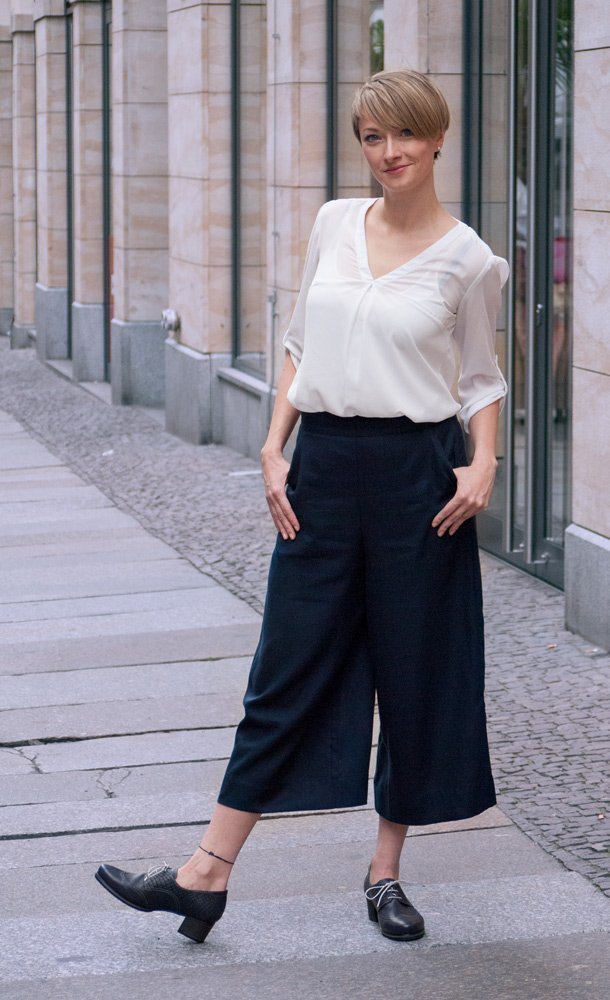
The global slow fashion movement is an important part of raising awareness about sustainability and fairer treatment of the workers who make the world’s clothes. The majority of consumers are often unaware of the working conditions under which garments are made or deliberately ignore them. But more and more consumers are speaking out publicly to reverse the disparity. The producers are getting a face, no longer appearing in a mass whose needs are not heard.
What is not happening in terms of sustainability?
The campaign “Who made your clothes?” commemorates the collapse of the Rana Plaza textile factory. Yet Rana Plaza is only one example among many of the abuses in the producing countries. What is wrong is that the safety conditions and the fabric of the factories are extremely poor, not only in Bangladesh but also in Vietnam and other countries. Tailors are forced to work in buildings that are in danger of collapsing under the threat of wage cuts.
Secondly, the wages paid are unworthy of living. Families who actually live in the country have to separate because the parents earn a little more money in the cities. However, the distances are not as luxurious as here in Germany. Commuting means seeing each other only about twice a year. And if someone complains or even wants to join unions, he or she is still physically threatened.
But everything that I can only minimally summarise here can be experienced much better in the film “The True Cost”, for example. An absolute recommendation!

“So what? It’s easy to make a hat like that.”
Oh really? Who has ever tried that? It takes understanding and know-how. Caps for 2 €, T-shirts for 4 €, trousers for 10 €, shoes for 20 €? If you briefly add up what is needed to make these garments, you quickly realise that somehow it doesn’t quite add up.
- Commodity production: plants on plantations (cotton), water, wages of harvest workers, sheep and cattle (wool, leather), wages of farmers…
- Cleaning and colouring: water, pigments, dyes…
- Weaving, cutting, pulling onto rolls…
- Transport: Ship, fuel, truck, rail, logistics centres…
- Sewing Thread: Yarn Works…
- Designers: Labour and material costs (computer programmes, paper, writing tools, choice of fabrics…).
- Middlemen
- Tailors: handicrafts, sewing machines are operated by people…
- Packaging: Paper industry…
- Photos: Photographers, models, lighting…
- Energy & time!
So, I’m far from finished, but I think it’s enough for the question: Is there a T-shirt for €4?

“There’s nothing you can do about it anyway.” Wrong!
Not falling for cheap promises would be a start. Fast fashion suggests personal wealth. “I can afford the latest fashion, I’m up to date, a fashionista! I have so many clothes like a queen!” But this has nothing to do with style or a strong personality, but only with mass behaviour directed by a minority. Because only for this small minority, which determines and plans this fashion, is this movement financially worthwhile. Many consumers throw away these quickly produced garments and buy new ones. It’s a vicious circle, because in this way you spend much more money in a short time than you actually have hanging in your wardrobe.
In addition, unimaginable mountains of waste are produced, which – attention! – often cannot even rot due to unnatural ingredients.
Instead, we can consciously buy from brands or smaller labels that belong to the slow fashion movement and focus on sustainability. They produce sustainably, fairly and also fashionably! The cliché of eco-fashion no longer applies here. Take a look at “Grünschnabel” in Oelsners Hof in Leipzig between Ritterstraße and Nikolaistraße.
Or if a piece is really no longer wearable, just re-sew it! Upcycling is great. This way, less is thrown away and gets a new life! Try it!

“What are the benefits of slow fashion and sustainability?”
- Planet-friendly grown raw materials
- Reasonably paid farmers
- No family structures torn apart
- Healthy workers
- Energy saving
- Water saving
- Long lasting materials
- Pretty clothes
- Sense of responsibility
- Information
- Education
- Style
- …
For further reading, information, amazement
No one who thinks like that makes it all up. But many write much more than I do and are better at presenting correlations. Therefore, also have a look at the following pages, they are not alternative facts.
- Impressively enlightening film: “The True Cost
- The initiative gives workers a face: The Fashion Revolution
- Oxfam Ambassador and founder of EcoAge for more responsibility in the fashion industry: Livia Firth
- Fashion information: Textile News
- Big names, big awareness: Stella McCartney
- Shops in Leipzig: Draufgängerund Grünschnabel
And now me! I made your hat!
I often receive wonderful fabric donations from colleagues and friends. I thank you all for that! For example, Julia Seyfarth, who plays a great role in Faunauge. Or Janet Sprotte from Zaneta Bridal Fashion. I use them to make my unique bridal accessories, bridal belts, headdresses and gothic accessories. Faunauge now also makes elaborate vintage hats. Everything is made in my studio. Everything you get from me is completely handmade in the spirit of sustainability. It takes time for conception, material composition and of course production. But I’ll gladly take this time for your jewellery!
© Faunauge
